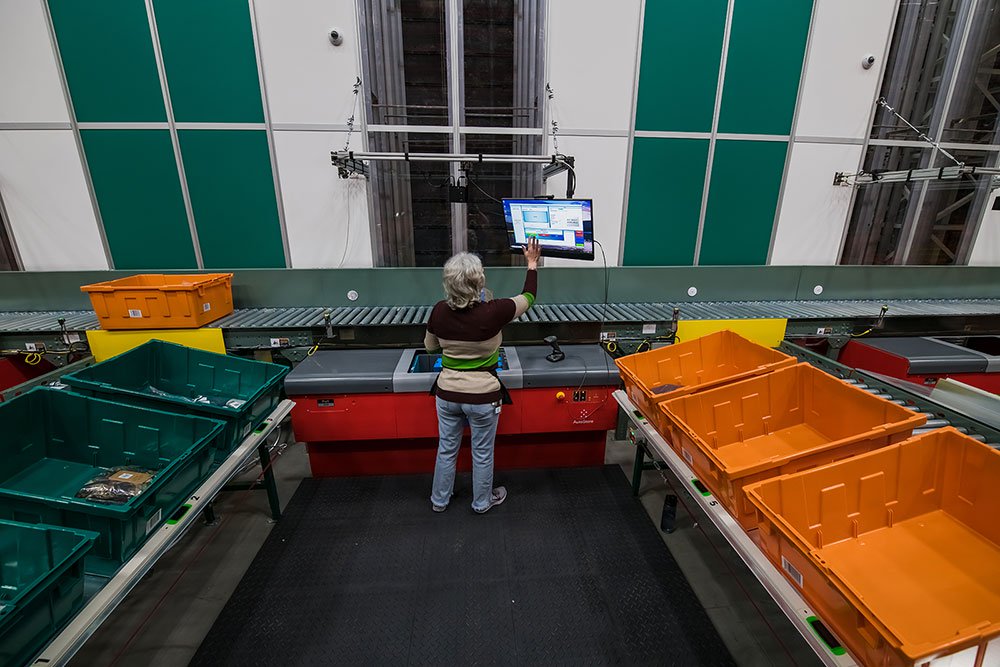
Key Distribution Center Operational Considerations for a New Year
Mike Senuta | 24 January 2024
Peak season has come and gone. Happy New Year!
As we close the door on a busy holiday season, it’s a good time for distribution center leaders to pause and reflect on how to apply the learnings of 2023 in order to make operational course corrections and define capital investment needs for 2024 and beyond.
The 2023 holiday season demonstrated continued sales growth, most notably in online sales, whether for BOPIS (buy-online-pickup-in-store) or ecommerce purchases, according to Bain’s recent report.
As you chart your distribution operation’s path forward consider a few key questions that take into account your business needs, workforce, trends and technologies. Not only will this help prepare your operations to excel in the new year but will help you assess your capabilities as external factors and challenges continue to evolve.
Review Your Current Operation to Support Business Change
Do current DC layout, technology, processes and systems support the changing needs of the business? What can be learned from challenges faced over the course of the year, and especially during peak periods?
Order profiles (lines and units per order) continue to change with the ongoing shift to e-commerce from bricks-and-mortar distribution. These changes often require different approaches to picking, packing and replenishment flows and processes to support picking more eaches and less full cases and pallets.
Are current operations capable of handling this shift, and of meeting ever-higher customer expectations for same or next day delivery? Picking from pallet racking and carton flow modules may no longer get the job done as in decades past. Automated goods-to-person technologies offer flexible alternatives with substantial operational benefits and strong ROI while supporting an evolving mix of sales channels.
Workforce Flexibility
Will the workforce be available to meet growing and changing business needs?
Competition for DC labor remains intense, especially during peak periods. Unemployment is near record lows. Temp agencies will continue to be challenged to meet peak demands with productive, reliable resources.
This means that scarce labor will continue to push wages higher and will exacerbate the challenges of maintaining staffing levels, especially for less desirable shift schedules.
These workforce factors make it especially challenging for conventional, labor-intensive operations to be able to flex resources to handle peak periods and volume variations while maintaining increasing customer service expectations. With increased e-commerce and less in-store purchases, requirements for DC flexibility and peak throughput capacity continue to grow.
Future Possibilities
Is the operation prepared to navigate the range of possibilities that may be in store over the next few years?
While the COVID pandemic seems largely behind us, the after-effects continue to ripple through supply chains. Consumer preferences and habits continue to change. Other wildcards such as political and economic instability around the world, and climate change, have the potential to impact and disrupt both sales channels and supply chains.
DC networks need to be nimble and prepared for a range of business scenarios and challenges. This requires flexibility in all aspects of DC operations – the ability to scale up or down, to shift to new distribution channels, to staff operations in a very challenging labor market.
Making the Right Investments
Do we have the latest info about trends and technology needed to make sound decisions about technology and capital investments to position the operation for success in the short and long term?
Distribution center automation technologies have developed rapidly over the past 5-10 years, with alternatives multiplying, initial investment costs decreasing and ROI increasing.
In some cases, conventional technology may still be the best option to gain additional productivity and flexibility at a modest investment. Increasingly, however, investment in sophisticated automated systems involving goods-to-person picking and robotics is warranted.
There are also a growing number of mid-range options, some of which can be implemented relatively quickly without a huge capital investment (e.g. autonomous mobile robots). Many of these provide the capability to pick small direct-to-consumer orders for next-day delivery while minimizing DC capital and operating costs.
Right-Sized Automation
With another year and another peak holiday season behind us, now is a good time for thoughtful review of lessons learned and planning for operational improvements and capital investment. Assessing the available technologies and which ones are the best fit can be a daunting task. Seek the expertise of a trusted consulting engineer and systems integrator to provide recommendations and strategies for improvement so that you can face the future with a competitive edge.
Mike Senuta is a Senior Consulting Engineer with Bastian Solutions, based in Indianapolis. In this role, he works with customers across North America to come up with innovative solutions to a broad range of distribution and material handling challenges. Mike has extensive experience in DC engineering and operations.
Comments
No comments have been posted to this Blog Post
Leave a Reply
Your email address will not be published.
Comment
Thank you for your comment.